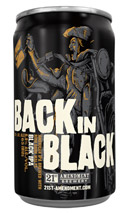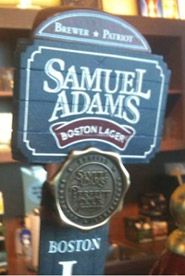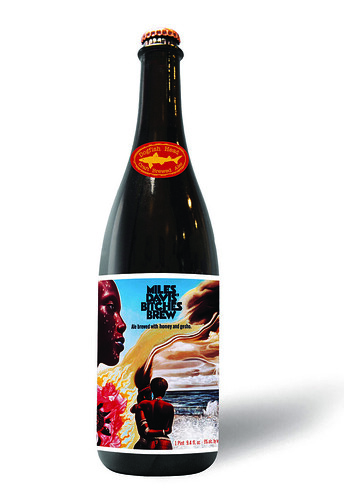Lost Abbey’s Red Poppy took home honors as Champion Wood Aged Beer during the wood aged beer competition at the Festival of Wood and Barrel Aged Beers in Chicago.
“I was shocked to see that Red Poppy took down all the big beers,” said Tomme Arthur, director of operations for Port Brewing/Lost Abbey, based in San Marcos, Calif. “At 5% ABV, it was a bit unexpected.”
Begun in 2003, the Festival of Wood and Barrel Aged Beers is the oldest and largest festival in the world to feature only beers aged in or on wood. More than 1,800 attended the 2010 festival, which featured 156 beers (plus two barrel-aged ciders) from breweries representing nearly half of the United States.
“We are thrilled that breweries nationwide choose our event to feature their best wood-aged beer,” said Jeff Sparrow, the event organizer. “Barrel aged craft beer started right here in Chicago,” added Peter Crowley, president of the Illinois Craft Brewers Guild, “and we are excited to see brewers everywhere push the boundaries with wood aging.”
Category 1: Classic Porter/Stout
1 Goose Island Brewpub, Chicago, Sweet Southern Kiss
2 Rock Bottom Restaurant & Brewery, Lombard, Ill., Pritchard #4
3 Piece Brewery & Pizzeria, Chicago, Jockey Full of Bourbon
Category 2: Strong Porter/Stout
1 Fitger’s Brewhouse, Duluth, Minn., Bourbon Barrel Edmund Imperial Stout
2 Port Brewing Company/The Lost Abbey, San Marcos, Calif., Older Viscosity
3 Fifty Fifty Brewing Company, Truckee, Calif., Imperial Eclipse Stout – 2009 Elijah Craig
Category 3: Barleywine/Wheatwine
1 Rock Bottom Restaurant & Brewery, Warrenville, Ill., Snarleywine
2 Flossmoor Station Restaurant & Brewery, Flossmoor, Ill., BA Hi-Fi Rye
3 Piece Brewery & Pizzeria, Chicago, Barrel Aged Mooseknuckle Barleywine
Category 4: Classic Styles
1 Rock Bottom Restaurant & Brewery, Cincinnati, Sarah’s Two Headed Buffalo
2 Bluegrass Brewing Company – Shelbyville Road, Louisville, Ky., Bourbon Barrel Biere de Garde
3 Firestone Walker Brewing Company, Paso Robles, Calif., Lil Opal
Category 5: Strong/Double/Imperial Pale Beer
1 Nebraska Brewing Company, Papillion, Neb., Melange A Trois
2 Schmaltz Brewing Company, San Francisco, Calif., R.I.P.A. on Rye
3 Nebraska Brewing Company, Papillion, Neb., Oaked Rye IPA
Category 6: Strong/Double/Imperial Dark Beers
1 America’s Brewing Company, Aurora, Ill., Why’s It Sooo Loud Scotch Ale
2 New Holland Brewing Company, New Holland, Mich., Charkoota Rye
3 Glacier Brewhouse, Anchorage, Alaska, Glacier Ice
Category 7: Fruit Beers
1 Port Brewing Company/The Lost Abbey, San Marcos, Calif., Red Poppy Ale
2 Three Floyds Brewing Company, Munster, Ind., Chocolate City
3 Rock Bottom Restaurant & Brewery, Lombard, Ill., Clusterfunk!
Category 8: Experimental Beers
1 Grand Teton Brewing Company, Victor, Idaho, Barrel-Aged Tail Waggin’ Double White Ale
2 Three Floyds Brewing Company, Munster, Ind., Conquistador de la Muerte
3 Lagunitas Brewing Company, Petaluma, Calif., Boubon Barrel Aged Cappuccino Stout
Category 9: Wild Beers
1 Squatters Pubs & Beers, Salt Lake City, Utah, Fifth Element
2 Upland Brewing Company, Bloomington, Ind., Dantalion
3 Goose Island Beer Company, Chicago, Lolita
Category 10: Wild Acidic Beers
1 Flossmoor Station Restaurant & Brewery, Flossmoor, Ill., Rosie Pom
2 New Belgium Brewing Company, Fort Collins, Calif., Tart Lychee
3 Destihl Brew Works, Bloomington, Ill., St. Dekkera Reserve: Framboise


 – San Francisco’s 21st Amendment Brewery has released Back in Black, the first black IPA in the USA in a can. “Our Black IPA (6.8% abv, 65 IBU) is a declaration of Independence from the tyranny of the expected,” co-founders Nico Freccia and Shaun O’Sullivan said for a press release. Black IPA is the newest official style in American craft beer, recently recognized by the Brewers Association with its own category for the upcoming 2010 Great American Beer Festival. The can is decorated with a modern-day Paul Revere bellowing out his call from the seat of a motorcycle. Alongside the graphics, the copy reads, “Inspired by Paul Revere’s midnight ride we rebelled against the British style IPA, embraced the more aggressive American version, then recast it in bold, brave defiant black.”
– San Francisco’s 21st Amendment Brewery has released Back in Black, the first black IPA in the USA in a can. “Our Black IPA (6.8% abv, 65 IBU) is a declaration of Independence from the tyranny of the expected,” co-founders Nico Freccia and Shaun O’Sullivan said for a press release. Black IPA is the newest official style in American craft beer, recently recognized by the Brewers Association with its own category for the upcoming 2010 Great American Beer Festival. The can is decorated with a modern-day Paul Revere bellowing out his call from the seat of a motorcycle. Alongside the graphics, the copy reads, “Inspired by Paul Revere’s midnight ride we rebelled against the British style IPA, embraced the more aggressive American version, then recast it in bold, brave defiant black.” Boston Beer Company has begun a “Perfect Pour” program for bars that pour Samuel Adams beers to standards set by the company.
Boston Beer Company has begun a “Perfect Pour” program for bars that pour Samuel Adams beers to standards set by the company.



 Firestone Walker Brewing has made Parabola Imperial Stout available for the first time in bottles, and the limited one-time release isn’t expected to last long.
Firestone Walker Brewing has made Parabola Imperial Stout available for the first time in bottles, and the limited one-time release isn’t expected to last long.